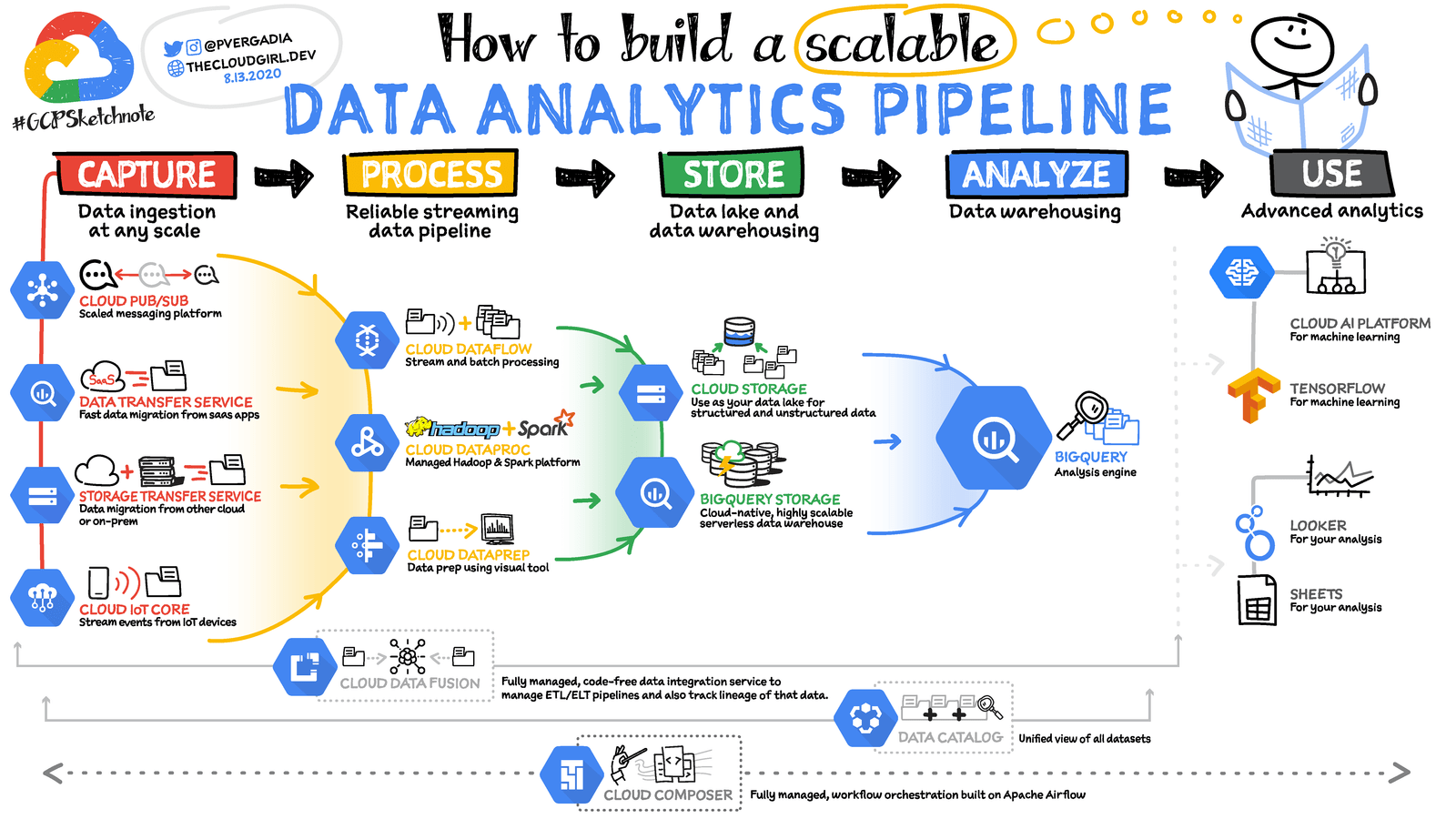In today’s fast-changing world of Data Analytics, coding has become a game-changer, transforming how we explore, analyze, and make use of data. As companies and industries increasingly rely on data to make informed choices, the importance of coding in Data Analytics cannot be overstated. Hence, individuals consider enrolling in the Data Analyst certification course.
With coding skills, Data Analysts can effortlessly handle massive datasets, uncover valuable nuggets of information, and present them in impactful ways through visualizations. In this era of data-driven decision-making, mastering coding is not just crucial; it’s a direct path to success for any aspiring Data Analyst.
Embracing coding opens up a world of possibilities, where data becomes a powerful tool for making meaningful impacts.
What is Data Analytics?
Data Analytics is the process of examining large sets of data to uncover patterns, trends, and insights that can drive informed decision-making. Data Analysts work with structured and unstructured data to draw meaningful conclusions and create visualizations to communicate their findings effectively. They play a crucial role in various industries, including finance, marketing, healthcare, and technology.
Coding Skills for Data Analytics
Coding is an essential skill for Data Analysts, as it enables them to manipulate, clean, and analyze data efficiently. Programming languages such as Python, R, SQL, and others are widely used in Data Analytics. With coding skills, Data Analysts can automate repetitive tasks, develop custom algorithms, and implement complex statistical analyses.
Python, known for its simplicity and versatility, is highly favored by Data Analysts. It offers rich libraries such as Pandas and NumPy, making data manipulation and visualization straightforward. R, on the other hand, is renowned for its powerful statistical capabilities, making it ideal for in-depth Data Analysis and modeling. SQL is essential for querying relational databases, which is a common task in Data Analytics.
Let’s take a closer look at each of these programming languages for Data Analysis:
Python
Python has gained immense popularity in the Data Analytics domain due to its readability and ease of use. It boasts a vast ecosystem of libraries and frameworks, making it highly adaptable for various data-related tasks. For instance, Pandas is a powerful library that facilitates data manipulation and analysis with its data structures and functions. Python’s integration with other languages, such as C and Java, further enhances its capabilities.
Key Features of Python for Data Analysis:
- Clear and simple syntax, making it easy for beginners to learn.
- Extensive libraries for data manipulation, visualization, and statistical analysis.
- Strong community support, with numerous resources and tutorials available.
- Widely used in Machine Learning and Artificial Intelligence, expanding its applications beyond Data Analysis.
Read Blog: Machine Learning Engineer Salary in India
R
R is a programming language specifically designed for statistics and Data Analysis. It excels in handling large datasets and offers a wide range of statistical packages and visualization tools. Data Analysts who require advanced statistical modeling and complex visualizations often prefer R for their projects.
Key Features of R for Data Analysis:
- Comprehensive statistical and graphical capabilities.
- Rich set of packages tailored for data manipulation and analysis.
- The active and dedicated user community contributes to its continuous development.
- Ideal for academic and research-oriented Data Analysis.
SQL
Structured Query Language (SQL) is essential for Data Analysts working with relational databases. SQL enables them to retrieve, manipulate, and manage data effectively. Data Analysts often use SQL to extract relevant information from databases, which forms the foundation of their analysis.
Key Features of SQL for Data Analysis:
- Specialized in querying databases, especially relational databases.
- Versatile in handling large datasets with complex relationships.
- Standardized language across various database management systems.
- Allows Data Analysts to perform complex joins, aggregations, and filtering operations.
Data Analyst vs. Programmer Salary
A Data Analyst’s salary can vary significantly based on factors such as experience, education, location, and the industry they work in. On average, Data Analysts can expect a competitive salary, with entry-level positions starting around ₹ 1.7 Lakhs to ₹ 11.2 Lakhs with an average annual salary of ₹ 4.1 Lakhs. As they gain more experience and expertise, their salaries can rise to over $100,000 annually.
In comparison, programmers’ salaries follow a similar trajectory, with entry-level salaries ranging from ₹ 1.8 Lakhs to ₹ 7.6 Lakhs with an average annual salary of ₹ 3.0 Lakhs annually.
Data Analyst Without Coding
While coding skills are highly beneficial for Data Analysts, some entry-level positions may not require extensive programming knowledge. Companies often hire Data Analysts for roles that focus primarily on data visualization, reporting, and using pre-built tools and dashboards.
In such cases, having a strong understanding of Data Analysis concepts, statistical techniques, and domain knowledge can be sufficient to perform the job effectively.
However, it’s essential to recognize that coding skills provide a significant advantage in the field of Data Analytics. They enable Data Analysts to work with raw and messy datasets, automate tasks, and conduct more sophisticated analyses. Additionally, having coding skills opens up avenues for career growth and the ability to tackle complex data challenges.
Data Analytics Coding
Coding in Data Analytics involves writing scripts and programs to manipulate, clean, and analyze data. Some common tasks include data cleaning, data transformation, creating data visualizations, building machine learning models, and implementing statistical algorithms. By using programming languages like Python and R, Data Analysts can streamline these processes, making them more efficient and less prone to human errors.
Data Analyst Certification Course
For aspiring Data Analysts looking to enhance their skills, there are numerous certification courses available. These courses cover various aspects of Data Analysis, including statistical methods, data visualization, machine learning, and programming languages like Python and R. Earning a certification can demonstrate a commitment to professional development and can be advantageous when seeking job opportunities.
Does Data Analyst Require Programming?
The requirement for programming skills in a Data Analyst’s role largely depends on the specific job responsibilities and the organization’s data infrastructure. While some Data Analyst positions may focus on data visualization and reporting, others may demand extensive coding skills for data manipulation and analysis.
In today’s data-driven world, coding has become an integral part of Data Analytics. A Data Analyst who possesses programming knowledge can efficiently handle large datasets, implement advanced statistical techniques, and contribute to data-driven decision-making.
Moreover, coding skills provide a competitive edge, allowing Data Analysts to explore diverse career opportunities in fields like data engineering, Data Science, and Artificial Intelligence.
Frequently Asked Questions
What coding skills do you need as a Data Analyst?
As a Data Analyst, you need coding skills in programming languages such as Python, R, and SQL. These languages enable you to efficiently manipulate, clean, and analyze data, automate tasks, and create visualizations.
Proficiency in Python is beneficial for its versatility, while R excels in statistical analysis. SQL is crucial for working with relational databases, a common task in data Analytics. Familiarity with these coding languages empowers Data Analysts to draw meaningful insights from large datasets and contribute significantly to data-driven decision-making.
What is coding in data analytics?
Coding in Data Analytics refers to the practice of writing scripts and programs to process and analyze data efficiently. It involves using programming languages like Python, R, or SQL to manipulate, transform, and visualize data.
Coding allows Data Analysts to automate repetitive tasks, conduct complex statistical analyses, and build machine-learning models. It plays a pivotal role in Data Analytics by facilitating data exploration and uncovering valuable insights from large datasets.
Is Data Analytics similar to coding?
Data Analytics and coding are related but distinct concepts. Data Analytics involves examining data to uncover patterns, trends, and insights for informed decision-making. Coding, on the other hand, is the practice of writing scripts and programs to process and analyze data efficiently.
While coding is a vital skill in Data Analytics, it encompasses a broader range of tasks, including data collection, cleaning, visualization, and interpretation. Data Analytics relies on coding for effective data manipulation, making them complementary skills in the Data Analyst’s toolkit.
Is Data Analytics easier than coding?
The complexity of Data Analytics and coding can vary based on individual perspectives and specific tasks. Data Analytics can involve complex statistical analysis, data preprocessing, and domain knowledge integration, which can be challenging.
On the other hand, learning to code may have a steeper learning curve for some individuals. However, with dedication and practice, both Data Analytics and coding can be mastered. It is essential to recognize that Data Analytics often requires coding skills, and proficiency in coding can significantly ease various Data Analysis tasks.
Conclusion
In conclusion, coding skills play a crucial role in the success of a Data Analyst. While there may be some Data Analyst roles that do not require extensive programming knowledge, possessing coding skills offers significant advantages and opens up more opportunities for career growth.
Python, R, and SQL are among the best programming languages for Data Analysis, each with its unique strengths.
Aspiring Data Analysts should consider investing time in learning coding and staying updated with the latest developments in the Data Analytics field. By doing so, they can position themselves as highly valuable assets in today’s data-centric business landscape. Whether you’re just starting your journey in Data Analytics or looking to advance your career, acquiring coding skills can be a game-changer in your pursuit of becoming a successful Data Analyst.
Start Your Learning Journey With the Best Data Analytics Course
Individuals I am to make a career in Data Analytics audit assigns domain, should have expertise in the fundamentals. With the data-driven courses developed by Pickl.AI, you would be able to gain complete insight into Data Analysis, its representation and also learn additional skills like communication, leadership traits, and presentation skills.
The curriculum has been devised by industry experts ensuring that you get a complete insight into how things work at the backend. Moreover, with real-world case studies and projects, you would be able to test your skills and enhance your proficiency in concepts of Data Science and analysis.












![Tableau Developer Salary in India [For Freshers & Experienced]](https://www.pickl.ai/blog/wp-content/uploads/2022/10/tableau-developer-salary-in-india-for-freashers-and-experienced-150x150.jpg)